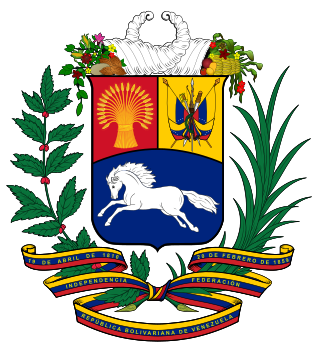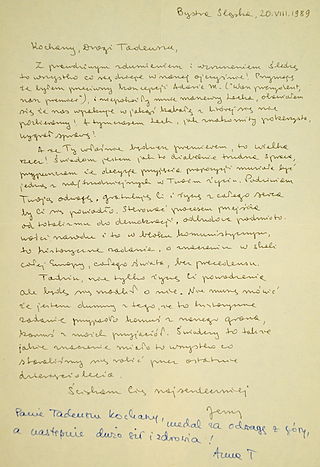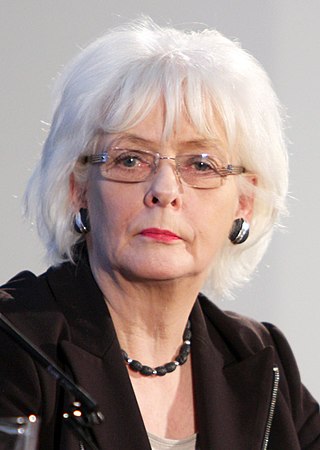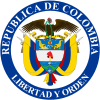
Venezuela is a federal presidential republic. The chief executive is the President of Venezuela who is both head of state and head of government. Executive power is exercised by the President. Legislative power is vested in the National Assembly of Venezuela. Supreme judicial power is exercised by the Supreme Tribunal of Justice.

The ministries of Poland are the various departments performing functions implemented by the Polish government. Each ministry is headed by a governmental minister selected by the Prime Minister, who sits in the collective executive Council of Ministers. The current competences and regulations of the ministries were established under a series of central administrative reforms carried out by prime ministers Józef Oleksy and Włodzimierz Cimoszewicz between 1996 and 1997. Under legal regulations, the cabinet can create, combine, or dissolve ministries, with the Prime Minister determining the scope and responsibilities of ministers. The number and range of ministries has varied throughout the past.
The Cabinet of Malaysia is the executive branch of the Government of Malaysia. Led by the Prime Minister, the cabinet is a council of ministers who are accountable collectively to the Parliament. According to the Article 43 of the Federal Constitution, members of the Cabinet can only be selected from members of either houses of Parliament. Formally, the Yang di-Pertuan Agong appoints all Ministers on the advice of the Prime Minister. The constitution is amended by repealing the Clause (8) of Article 43, enabling a person who is a member of State Legislative Assembly to continue to serve even while serving as a minister or deputy minister in the cabinet. Ministers other than the Prime Minister shall hold office during the pleasure of the Yang di-Pertuan Agong, unless the appointment of any Minister shall have been revoked by the Yang di-Pertuan Agong on the advice of the Prime Minister but any Minister may resign from office. In practice, the Yang di-Pertuan Agong is obliged to follow the advice of the Prime Minister on the appointment and dismissal of ministers.

The Government Secretariat is collectively formed by the Offices of the Chief Secretary and the Financial Secretary and thirteen policy bureaux.

The federal administration of Switzerland is the ensemble of agencies that constitute, together with the Swiss Federal Council, the executive branch of the Swiss federal authorities. The administration is charged with executing federal law and preparing draft laws and policy for the Federal Council and the Federal Assembly.

The Ministry of Transport and Sustainable Mobility (MITMA), traditionally known as the Ministry of Development (MIFOM), is the department of the Government of Spain responsible for preparing and implementing the government policy on land, air and maritime transport infrastructure and the control, planning and regulation of the transport services on this areas. It is also responsible for guaranteeing access to housing; urban, soil and architecture policies; planning and controlling the postal and telegraph services, directing the services related to astronomy, geodesy, geophysics and mapping, and planning and programing the government investments on infrastructure and services related to this scope. The Ministry's headquarters are in the New Ministries government complex.

Government ministries of Syria make up the portfolios of the Cabinet of Syria.
The Ministry of the Interior is a government agency of Italy, headquartered in Rome. It is a cabinet-level ministry of the Italian Republic. As of October 2022, Matteo Piantedosi, former Prefect of Rome, is the minister.
Government ministries in Ukraine are the central bodies that are entrusted to implement a state policies in a certain field of government. Each ministry is governed by a respective minister. The collective of ministries is called the Cabinet of Ministers of Ukraine. The modern Ukrainian ministries were first established after the February Revolution of 1917 when the Russian Emperor was forced to abdicate. The first ministries (secretariats) were Secretariat of state, Finance, Justice, Labor, Education, Communication, Trade and Industry, Transportation,, Military, Agriculture, and Office of General Secretariat.

The Ministry of Labour and Social Economy (MITES) is the department of the Government of Spain responsible for planning and carrying out the government policy on labour relations and social economy.

Cabinet of Tadeusz Mazowiecki, led by Prime Minister Tadeusz Mazowiecki, came to power following the 1989 legislative election. He was nominated by the President as the Prime Minister on 24 August 1989 in order to form a new government after the Sejm rejected the Communist cabinet of Czesław Kiszczak, and subsequently obtained the mandatory motion of confidence in the Sejm on 12 September 1989. The cabinet resigned on 25 November 1990, and the Sejm accepted the resignation of the cabinet on 14 December, though it continued to perform its duties until the formation of the Cabinet of Jan Krzysztof Bielecki on 4 January 1991.

The Second cabinet of Jóhanna Sigurðardóttir in Iceland was formed 10 May 2009. The cabinet left office on 23 May 2013.

A Ministry of the Republic of Italy is an administrative organ of the Republic of Italy, placed at the top of Italian public administration and is characterised by one or more specific competencies, with an organised structure, often varying over time.

The second government of Hussein Arnous was formed after appointment by the President of Syria on 10 August 2021 and took the oath of office on 14 August 2021, after the presidential election held in May. This replaced the caretaker ministry formed in July. The government is the 95th since Syria gained independence from the Ottoman Empire in 1918 and is the eighth during the presidency of Bashar al-Assad.
The Colombian order of precedence is a symbolic hierarchy of officials used to direct protocol. It is regulated by Act 1444 of 4 May 2011.

The Anwar Ibrahim cabinet is the current federal cabinet of Malaysia, formed on 3 December 2022, nine days after Anwar Ibrahim took office as the 10th Prime Minister of Malaysia. The composition of the cabinet was announced by Anwar a day earlier on 2 December 2022, consisting of most of the political coalitions and parties represented in the 15th Parliament. Although Perikatan Nasional (PN) was also invited to join the government, it decided to decline the invitation and instead formed the opposition. The government is often referred to as "unity government".


































